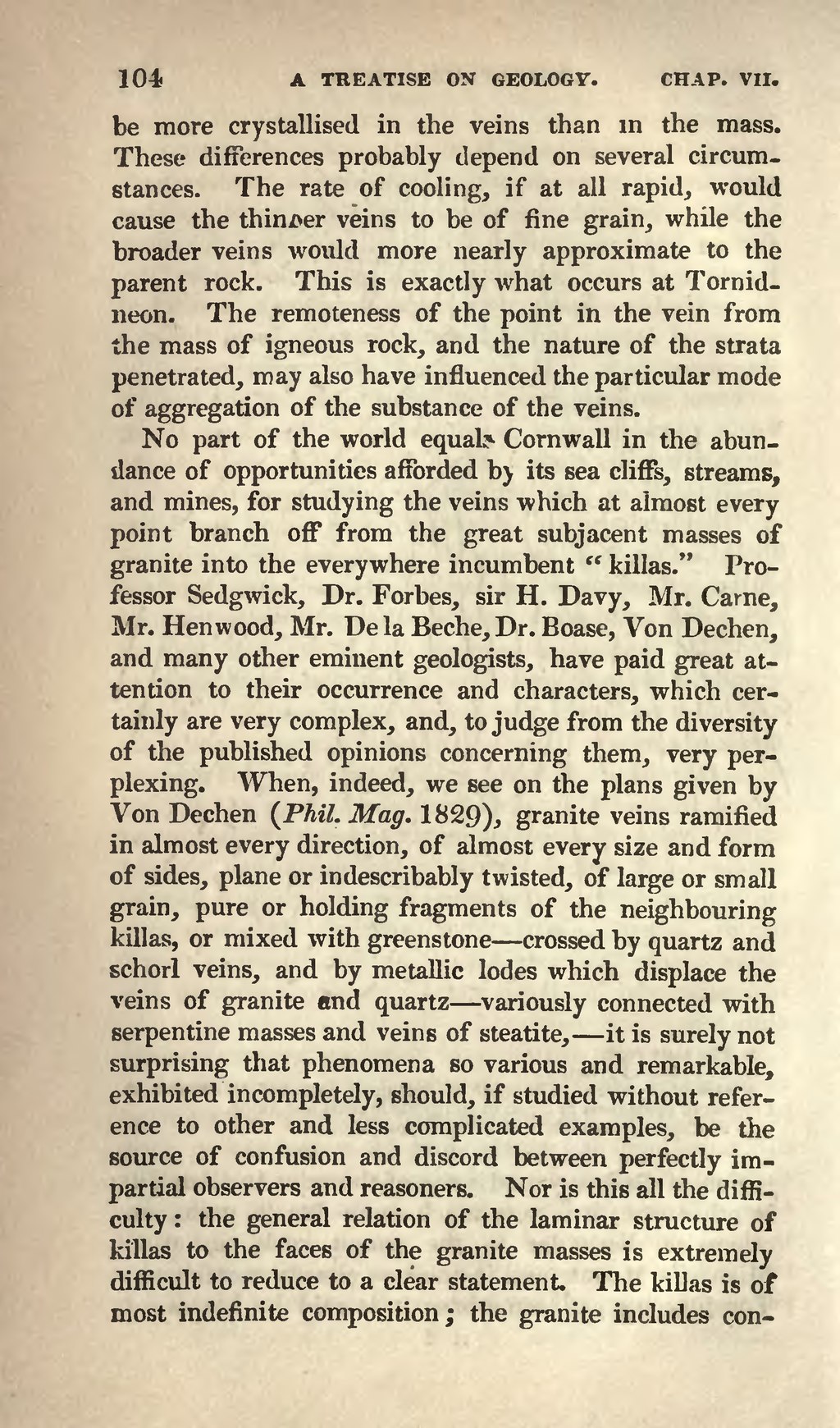be more crystallised in the veins than in the mass. These differences probably depend on several circumstances. The rate of cooling, if at all rapid, would cause the thinker veins to be of fine grain, while the broader veins would more nearly approximate to the parent rock. This is exactly what occurs at Tornidneon. The remoteness of the point in the vein from the mass of igneous rock, and the nature of the strata penetrated, may also have influenced the particular mode of aggregation of the substance of the veins.
No part of the world equals Cornwall in the abundance of opportunities afforded by its sea cliffs, streams, and mines, for studying the veins which at almost every point branch off from the great subjacent masses of granite into the everywhere incumbent "killas." Professor Sedgwick, Dr. Forbes, sir H. Davy, Mr. Carne, Mr. Kenwood, Mr. De la Beche, Dr. Boase, Von Dechen, and many other eminent geologists, have paid great attention to their occurrence and characters, which certainly are very complex, and, to judge from the diversity of the published opinions concerning them, very perplexing. When, indeed, we see on the plans given by Von Dechen (Phil. Mag. 1829), granite veins ramified in almost every direction, of almost every size and form of sides, plane or indescribably twisted, of large or small grain, pure or holding fragments of the neighbouring killas, or mixed with greenstone crossed by quartz and schorl veins, and by metallic lodes which displace the veins of granite and quartz variously connected with serpentine masses and veins of steatite, it is surely not surprising that phenomena so various and remarkable, exhibited incompletely, should, if studied without reference to other and less complicated examples, be the source of confusion and discord between perfectly impartial observers and reasoners. Nor is this all the difficulty: the general relation of the laminar structure of killas to the faces of the granite masses is extremely difficult to reduce to a clear statement. The killas is of most indefinite composition; the granite includes con-
